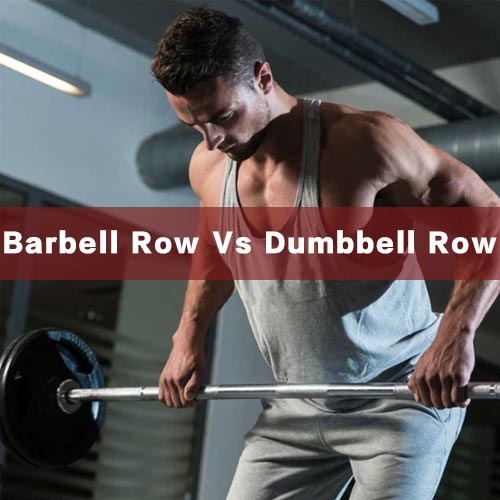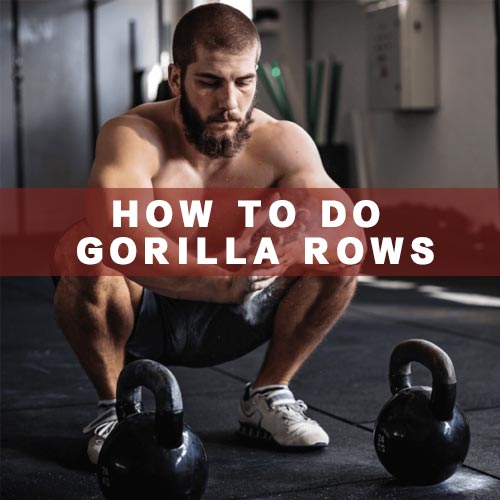
Are you ready to transform your forearms into powerhouses of strength?
Welcome to the gateway of forearm empowerment! Building strong forearms aren't just about aesthetics, it's about unlocking areas of functional strength and injury recovery.
Dr. Sarah Harmon, Orthopedic Surgeon said, "Forearm exercises are pivotal for injury prevention, especially in activities requiring repetitive hand and wrist motions. Strengthening these muscles provides a protective shield for joints."
Whether you're aiming to conquer your grip game, enhance athletic prowess, or simply elevate your daily tasks, our comprehensive guide to forearm exercises has you covered. Strap in as we delve into grip-enhancing techniques, advanced variations that will inspire your journey to forearm dominance. Let's sculpt strength from fingertips to elbows and redefine what it means to have a firm grip on life!
Why Focus on Forearms?

Enhanced Grip Strength: The forearms play a crucial role in grip strength. Whether you're lifting weights, performing pull-ups, or even carrying groceries, a strong grip is essential. Developing your forearms can significantly improve your ability to hold onto objects securely and perform various physical tasks more effectively.
Functional Strength: Strong forearms contribute to overall functional strength and stability. Many daily activities, such as carrying heavy objects, opening jars, or performing manual labor, heavily rely on forearm strength. By strengthening your forearms, you enhance your ability to handle these tasks with ease and reduce the risk of injuries.
Injury Prevention: Weak forearms can lead to imbalances in the upper body, increasing the likelihood of injuries. Strengthening your forearms helps stabilize the wrists and elbows, reducing the risk of strain and overuse injuries in these areas. It promotes better joint health and overall stability during weightlifting and other physical activities.
Improved Athletic Performance: Forearm strength is crucial in numerous sports and athletic disciplines. Whether you're swinging a golf club, throwing a punch, or gripping climbing holds, strong forearms can enhance your performance. Developing powerful forearms provides a solid foundation for generating force, improving accuracy, and maintaining control in various athletic movements.
Aesthetics: Well-developed forearms are visually appealing and add symmetry to your physique. They contribute to the overall balance and proportion of your upper body, enhancing your muscular definition and creating a more sculpted appearance.
What Forearm Muscles Do?

The forearms consist of a complex network of muscles responsible for various movements and functions. Understanding the primary forearm muscles and their functions can help you target them effectively during workouts.
Flexor Digitorum Profundus (FDP)
Function: This muscle flexes the distal interphalangeal joints (DIP) of the fingers, allowing you to make a fist or grip objects tightly.
Flexor Digitorum Superficialis (FDS)
Function: Responsible for flexing the proximal interphalangeal joints (PIP) of the fingers, enabling you to bend your fingers when making a fist.
Flexor Carpi Radialis
Function: Flexes and abducts the wrist, assisting in movements like lifting and pushing.
Flexor Carpi Ulnaris
Function: Flexes and adducts the wrist, aiding in movements such as pulling or lifting with a twist.
Palmaris Longus
Function: Aids in wrist flexion and stabilizes the palmar aponeurosis (a layer of fascia in the palm).
Extensor Digitorum
Function: Extends the fingers and the wrist, crucial for activities involving an open hand or gripping.
Extensor Carpi Radialis Longus and Brevis
Function: Extend and abduct the wrist, facilitating movements like lifting or pushing away.
Extensor Carpi Ulnaris
Function: Extends and adducts the wrist, assisting in movements that involve pulling or lifting with a twist.
12 Forearm Exercises
Strong forearms are not only essential for a firm handshake but also play a crucial role in various daily activities and athletic pursuits. Here are 12 forearm exercises that you need to do at least twice a week on non-consecutive days.
1.Wrist Curls

One of the most effective exercises for forearm strength is wrist curls.
How to do it:
Using a dumbbell or barbell, sit on a weight bench and rest your forearms on your thighs, palms facing up. Slowly curl your wrists upward, squeezing your forearms. Lower the weight back down in a controlled manner.
Read More: How to Do Wrist Curl
2.Reverse Wrist Curls

Reverse wrist curls target the muscles on the top of your forearms.
How to do it:
Similar to wrist curls, sit on a bench with your forearms resting on your thighs, palms facing down this time. Curl your wrists upward, contracting the top of your forearms. Lower the weight back down slowly.
3.Farmers Carry

The farmers carry is an excellent compound exercise that engages multiple muscle groups, including the forearms.
How to do it:
Grab a pair of heavy dumbbells or kettlebells and walk for a designated distance or time while maintaining proper posture and a tight grip.
4.Plate Pinches

Plate pinches are a fantastic exercise for improving grip strength.
How to do it:
Hold two weight plates together, smooth sides facing outwards, and grip them with your fingers and thumb. Lift the plates off the ground, squeezing them together as tightly as possible.
5.Towel Pull-Ups

Upgrade your regular pull-ups by using a towel.
How to do it:
Hang a gym towel over a pull-up bar and grip the ends of the towel instead of the bar. Perform pull-ups, focusing on maintaining a strong grip throughout the movement. Aim for three sets of 8-10 repetitions.
6.Hand Grippers

Hand grippers are a convenient tool for strengthening your grip and forearms.
How to do it:
Choose a hand gripper with an appropriate resistance level and squeeze it together, holding for a few seconds before releasing.
7.Wrist Roller

A wrist roller is a simple yet highly effective device for forearm training.
How to do it:
Attach a weight plate to a rope or dowel and hold it with both hands. Roll the weight up by curling your wrists, then slowly lower it back down.
8.Hammer Curls

Hammer curls are a versatile exercise that primarily targets the brachialis muscle, which lies underneath the biceps.
How to do it:
Stand with your feet shoulder-width apart, holding a dumbbell in each hand with a neutral grip (palms facing your body). Keeping your elbows close to your sides, curl the dumbbells up towards your shoulders, focusing on contracting the forearms.
Read More: How to Do a Hammer Curl
9.Reverse Barbell Curl

Reverse curl barbell exercises work the brachioradialis muscle, which runs along the outer side of your forearm.
How to do it:
Stand with your feet shoulder-width apart, holding a barbell with an overhand grip (palms facing down). Keeping your elbows close to your sides, curl the barbell up towards your shoulders while focusing on contracting the outer forearm muscles. Lower the barbell back down in a controlled manner.
10.Forearm Plank

While not a direct exercise for the forearms, the forearm plank is an isometric exercise that engages the entire core, including the forearms.
How to do it:
Start in a push-up position, then lower yourself onto your forearms, maintaining a straight line from your head to your feet. Hold this position for as long as you can.
11.Eccentric Forearm Exercises

Incorporating eccentric training into your forearm workouts can provide additional stimulus for muscle growth.
How to do it:
For example, instead of simply lowering the weight after a wrist curl, focus on slowing down the lowering phase, taking three to four seconds to return to the starting position. This controlled eccentric contraction can enhance muscle development and improve strength.
12.Wrist Flexion

How to do it:
Bend your right elbow and clasp your left hand over the fingers on your right hand. Gently bend your wrist back so the back of your hand is closer to your forearm, then extend your right arm to feel the stretch. After 60 seconds, stretch the opposite muscles, bending your fingers and wrist so your palm is closer to your forearm.
Remember to warm up your forearms before starting these exercises to reduce the risk of injury. Start with lighter weights or resistance and gradually increase as your strength improves. Consistency and proper form are key to achieving optimal results.


